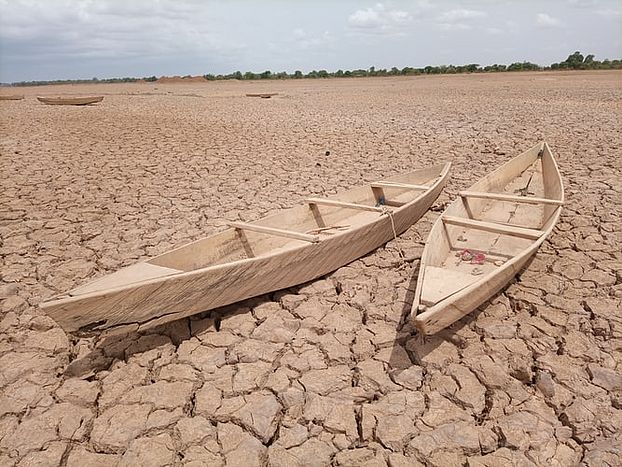/ Forschung
The Egyptian region of Faiyum experienced a climatic migration in the third century AD

A new scientific study found that the Egyptian Faiyum Oasis region experienced a mass climate migration during the third century AD resulting from the eruption of a volcano in the Arctic, the scarcity of monsoon rains and severe drought.
A new scientific study found that the mass migrations that the Fayoum region, which is close to the Nile River, known thousands of years ago, were due to the manifestations of climatic changes represented mainly by the lack of monsoon rains that led to the population at that time suffering from severe droughts.
This region, which is located about 130 km southwest of the Egyptian capital Cairo, was an important center for the Roman Empire, which knew a civilizational prosperity because it was located on green spaces and fruitful oases, but everything collapsed during the third century AD, when the population was forced to migrate in the form of what is known. Today by climate migration.
According to the study carried out by researchers from the University of Basel and published in the American Journal of Late Antiquity, there are many monuments and fossils that also confirm that all the attempts made by the inhabitants of the region to adapt to climate changes have failed.
A volcanic eruption exacerbated the crisis
The supervisor of the study, Sabine Huebner, said in the press release of the University of Basel, Switzerland, issued on January 25, that the scarcity of monsoon rains during the second half of the third century AD was apparently due to a volcanic eruption that occurred around 266 AD in the Arctic.
The researcher explained that this massive volcanic eruption had negative effects on the prevailing global climate at the time, as the volcano expelled lava and gases mixed with sulfuric acid, causing a significant decrease in temperature throughout our planet, and the result is that the hot areas have known scarcity of rain for many years.
It seems, according to the researcher's description, that the water level of the Nile River has decreased so much that the inhabitants of the Fayoum region have become unable to cope with the situation despite the many attempts they made to overcome the ordeal.
"Our analyzes of some remains and monuments in the region confirm that many of the region's residents, who used to depend on agriculture for their livelihood, had to switch from planting grains to planting vines, and this is one of the aspects of adaptation to climate change, and there are also historical accounts indicating the occurrence of conflicts," the researcher said. And disputes over sources of fresh water. "
Natural causes of climate change
Contrary to many opinions of climate experts who believe that human activity is always the cause of climate change, this study confirms that some natural phenomena, such as volcanic eruptions, can cause this as well, which is what happened during the period under study that prompted the inhabitants of the Fayoum region to act in the manner. What environmental experts today call climate migration.
The supervisor of the study returned to say, "The climate change that occurred in the third century AD was not due to human action as it is known today, but was due to a natural phenomenon. We have confirmed through this study that the manifestations of climate change differ according to different regions, as there are areas affected by desertification and others that have known drought." And a lack of monsoons. "
